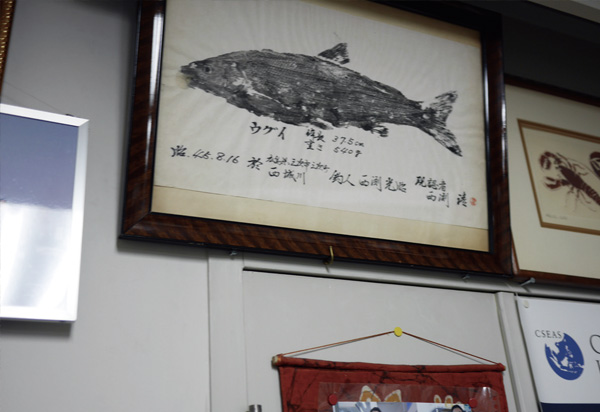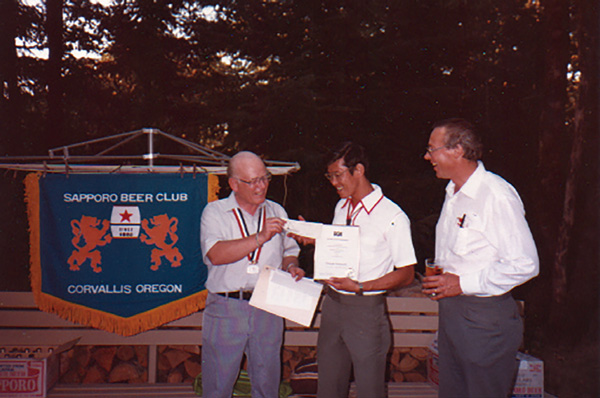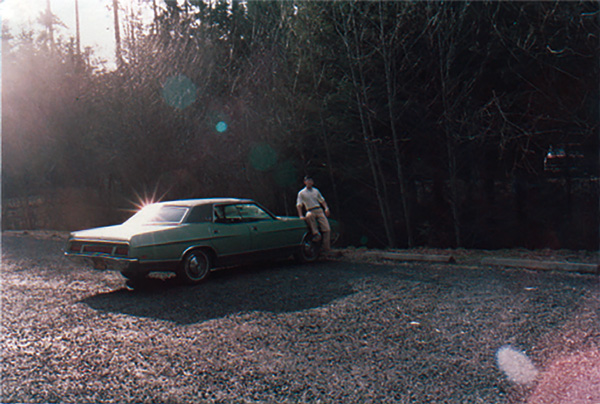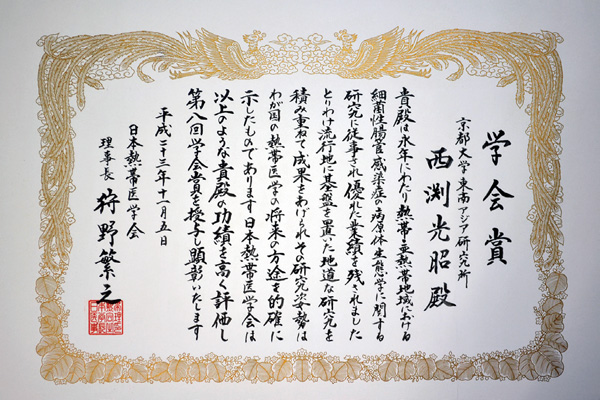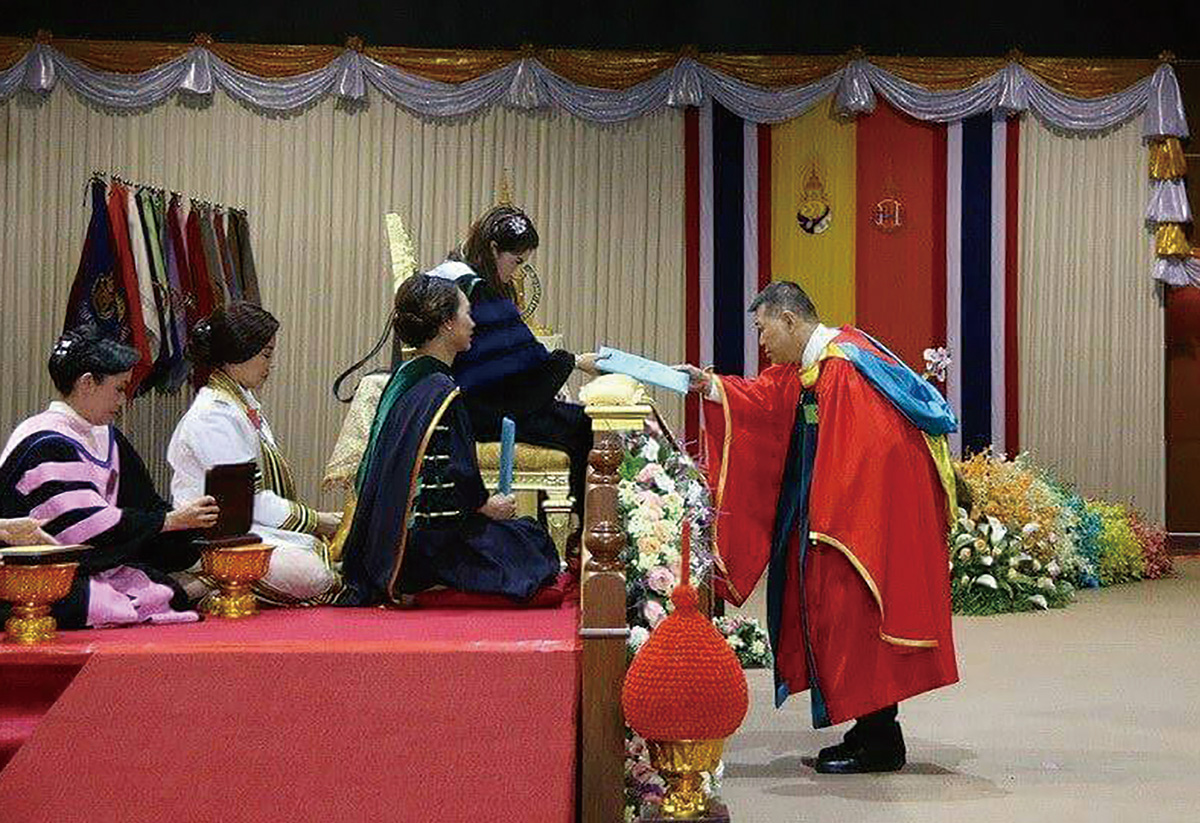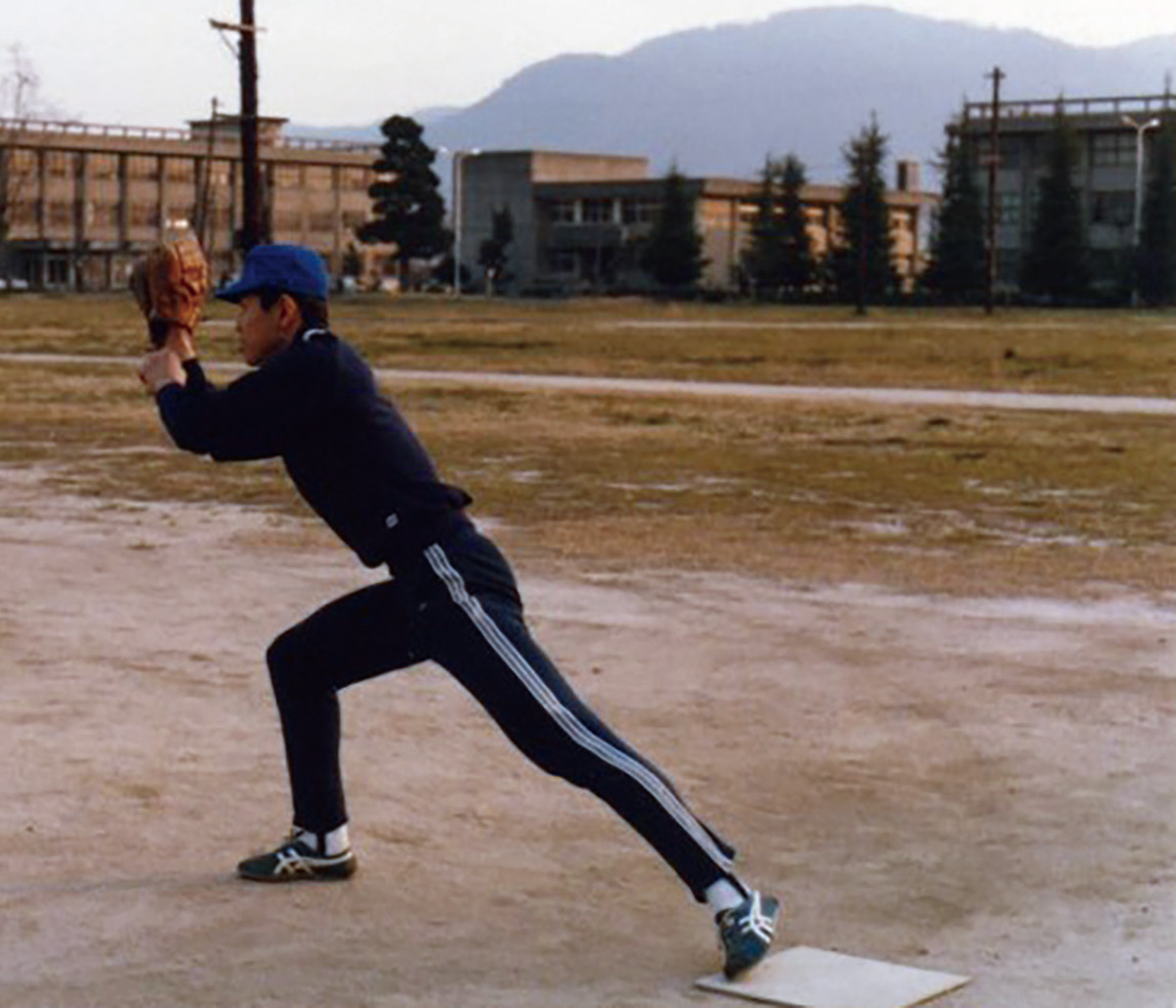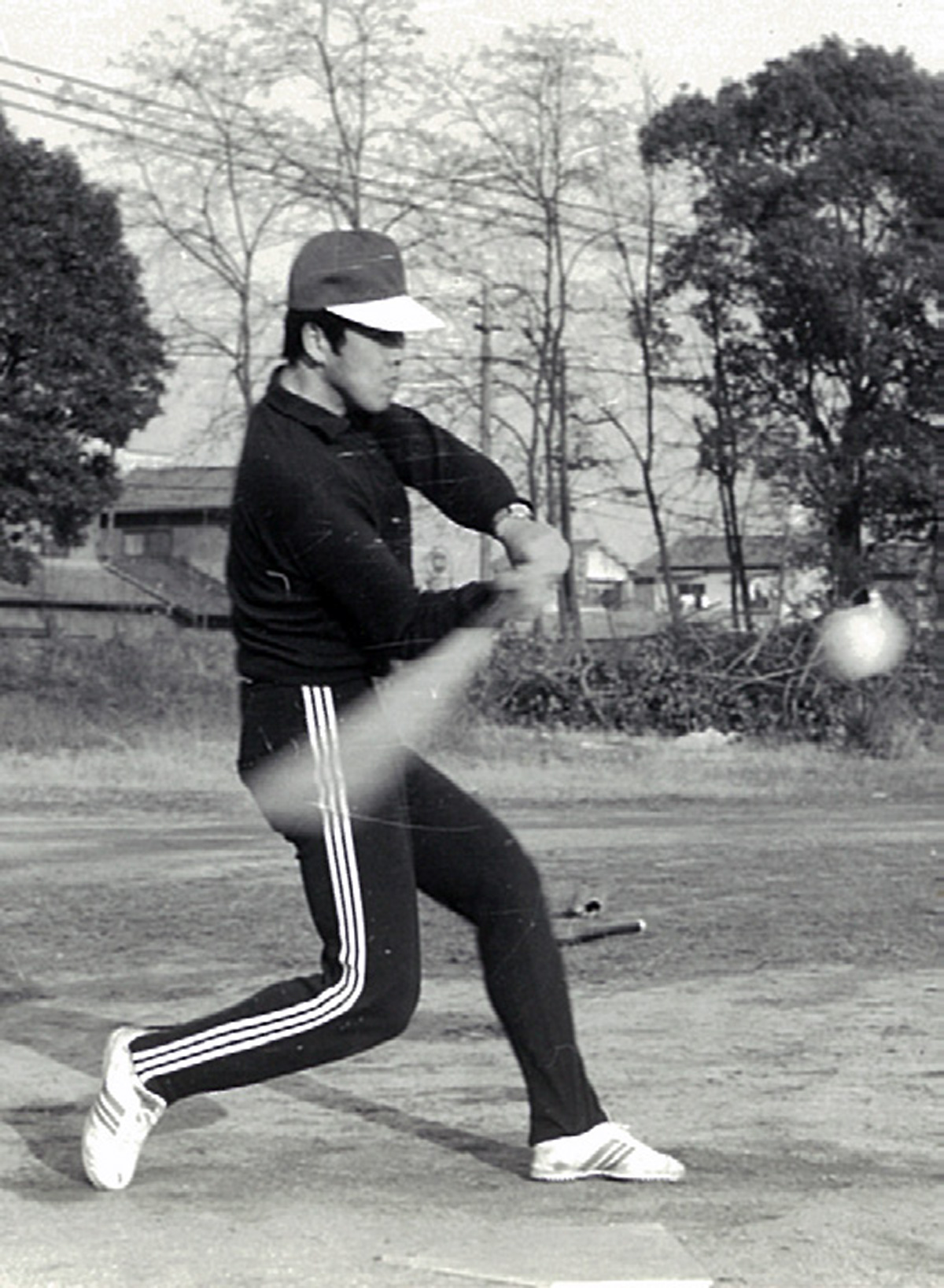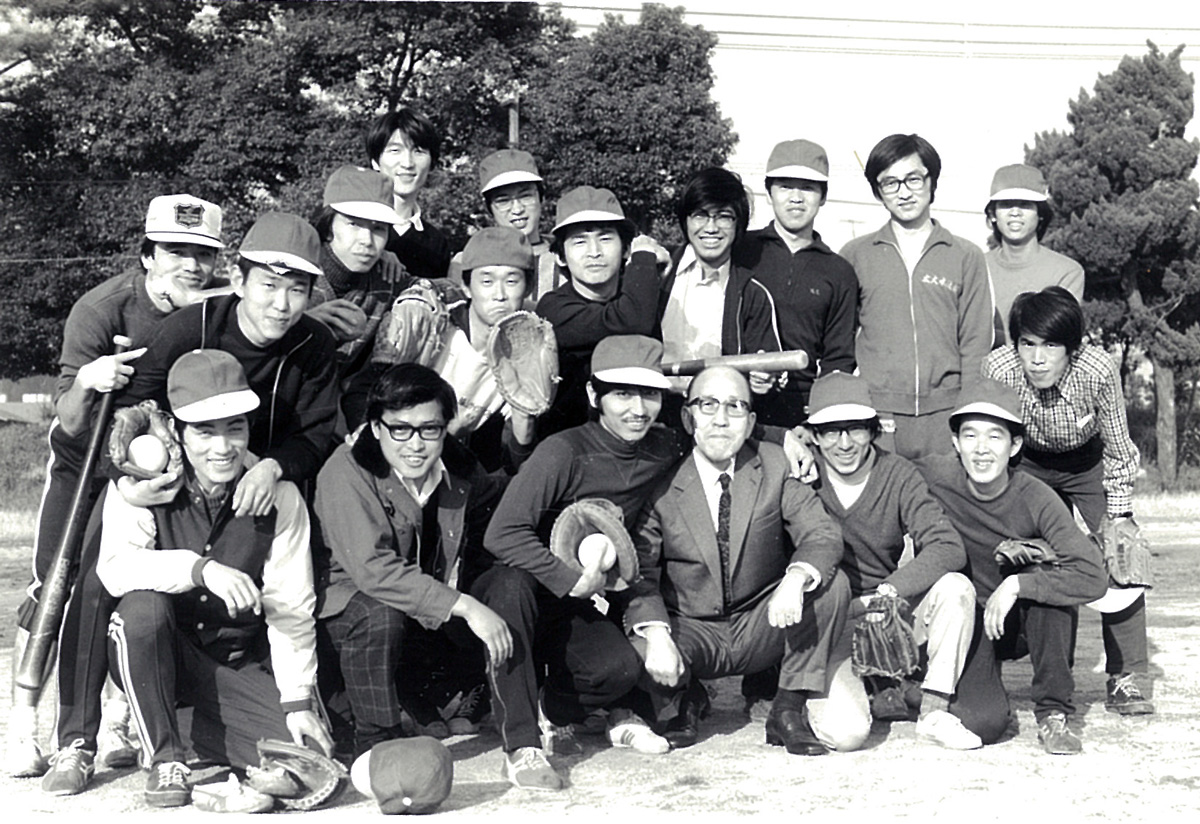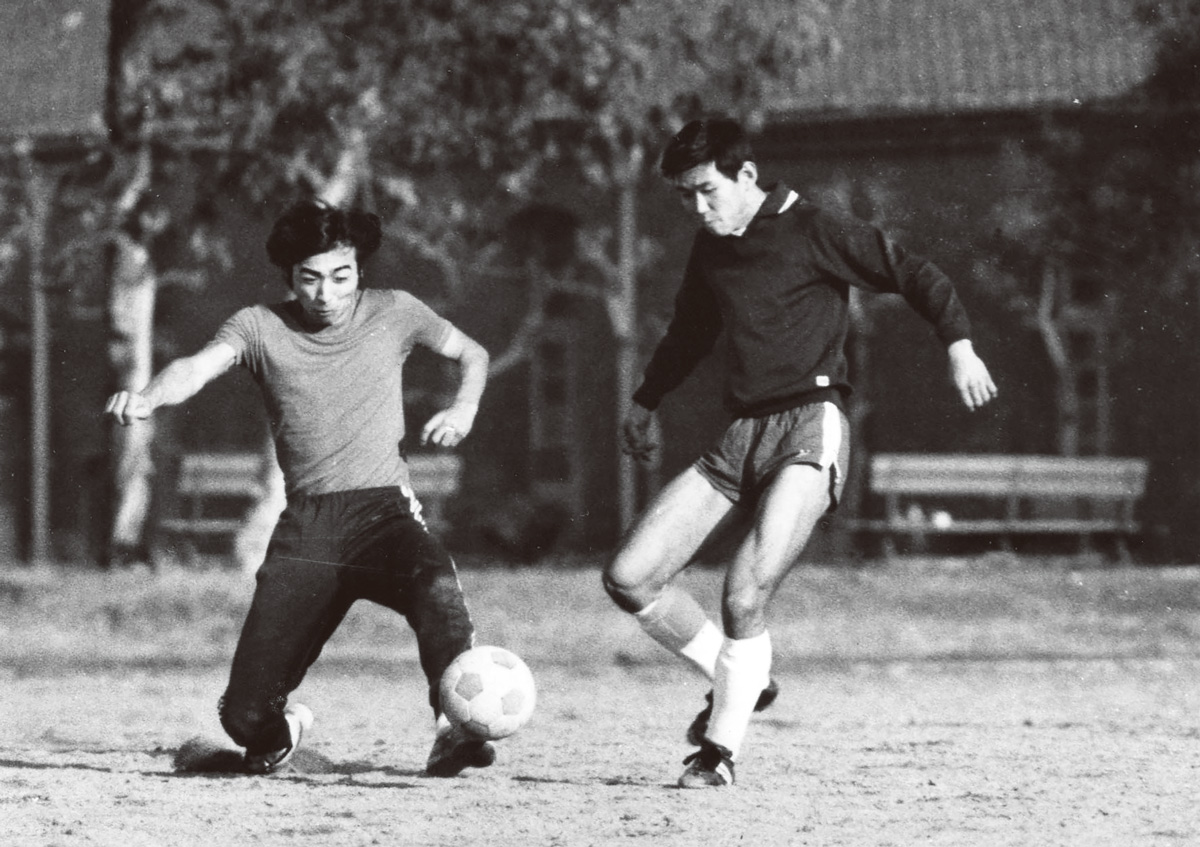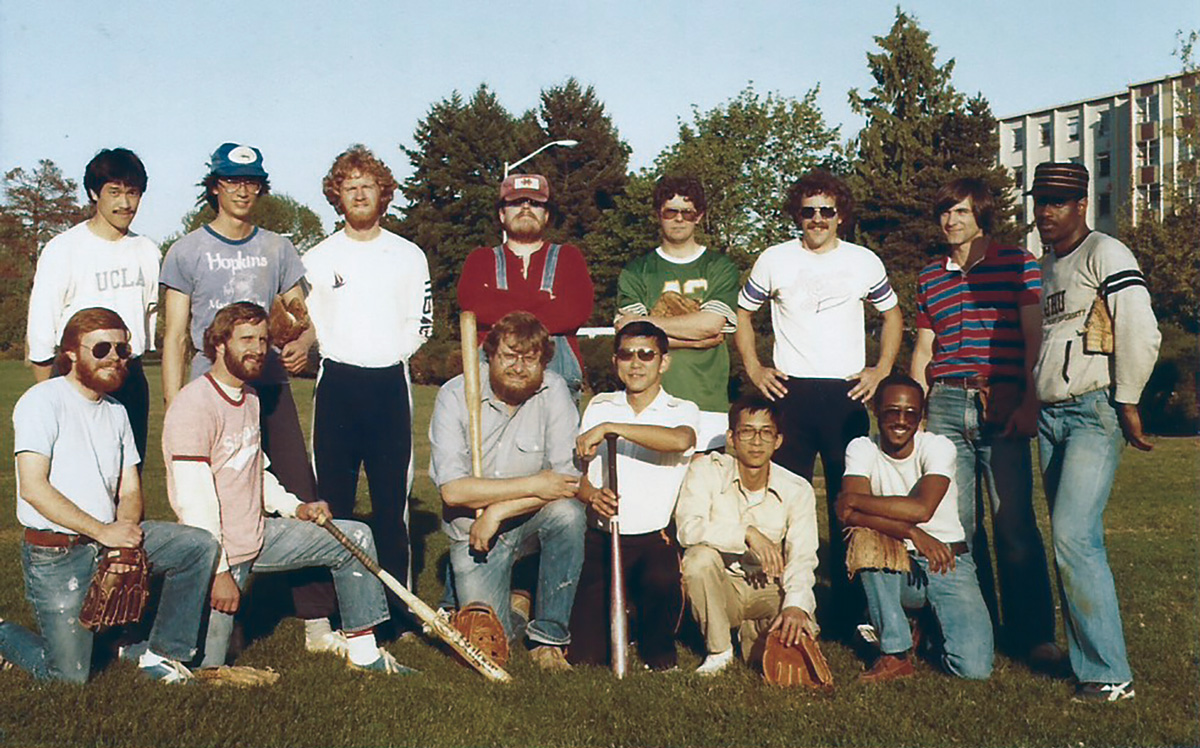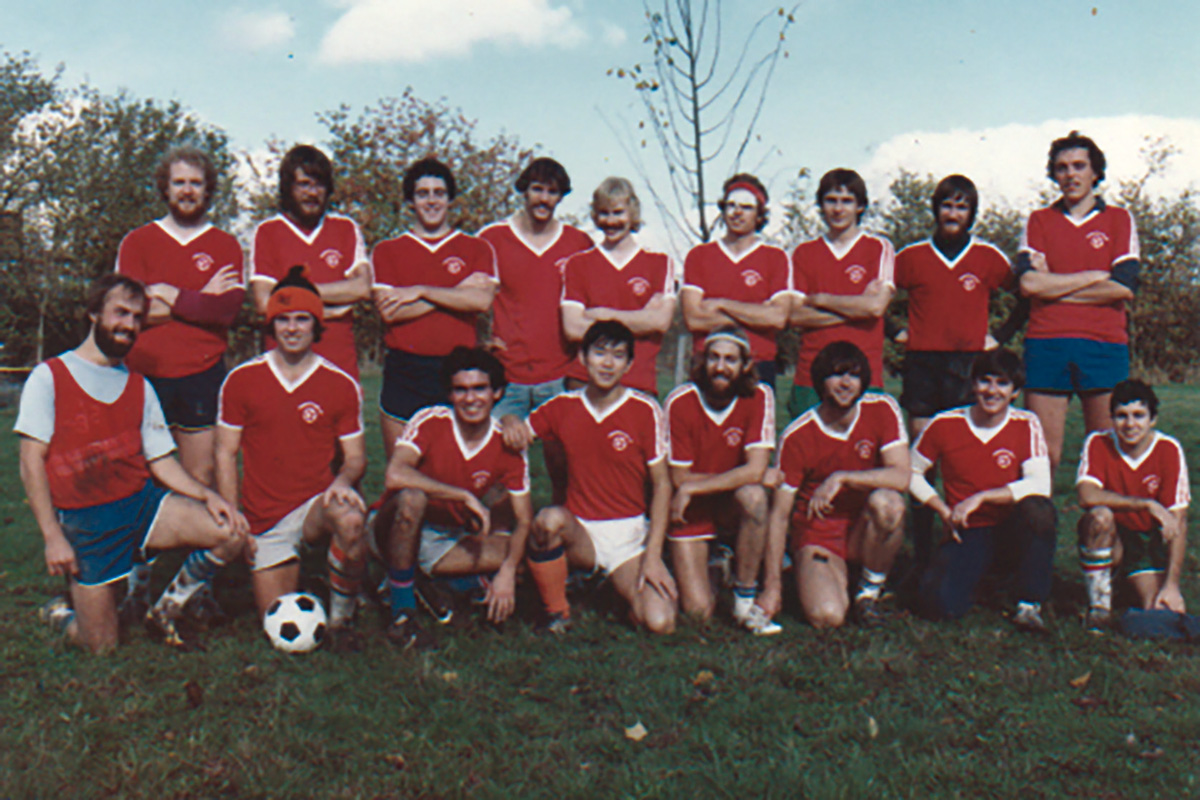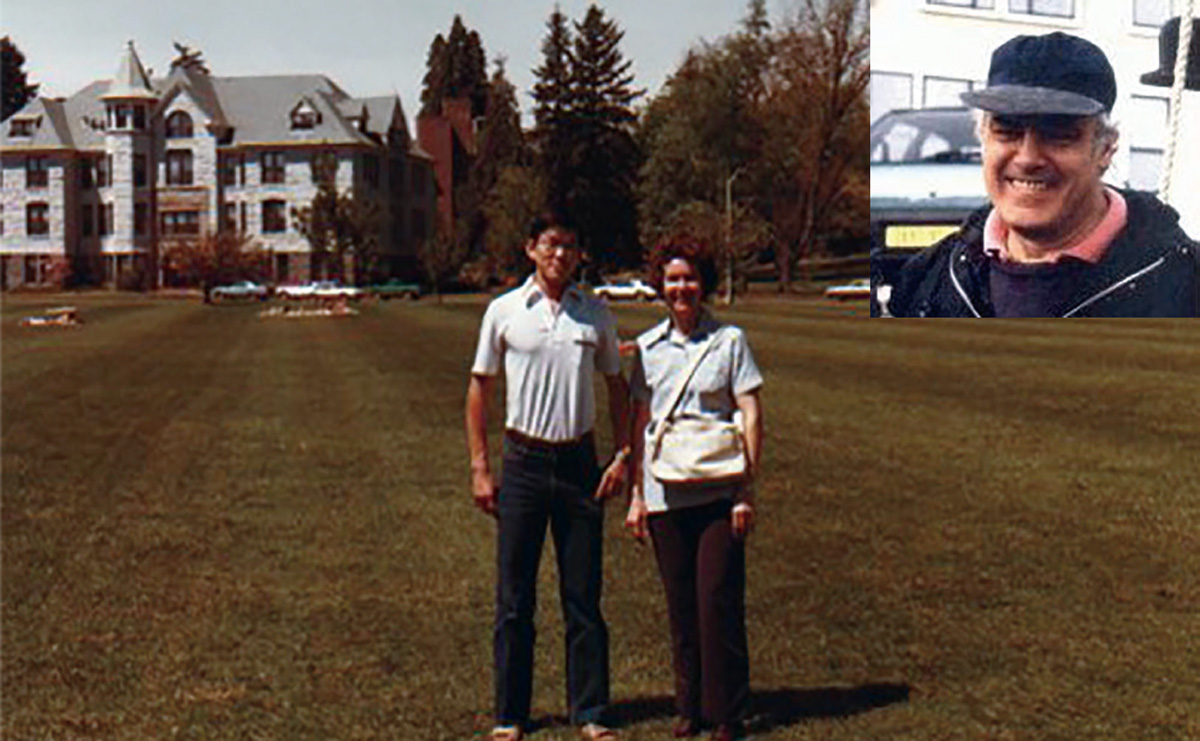Interviewed by
Yoshitsugu Nakaguchi
Associate Professor, Department of Food Science, Bioresources and Environmental Sciences, Ishikawa Prefectural University
NAKAGUCHI Yoshitsugu (NY): Could I start by asking you to share some of your most impressive memories when looking back over your life so far?
NISHIBUCHI Mitsuaki (NM): I am a very lucky person to be
surrounded by warm, understanding and compassionate people,
including my own family, who have always let me live my
life freely as I wished, so it is hard to choose a few memories
out of so many.
Briefly looking back over my life from early childhood, I can
recall playing in nature when I was little and I made a lot of
friends as a student, through enjoying sports and drinking parties
both in Japan and in the U.S. I also came to be interested
in machines through bicycles and cars. Since I became a
researcher, I have been able to enjoy multidisciplinary international
joint studies with researchers from various countries by
making use of such experiences. In retrospect, I could say that
my childhood experiences had an exceptionally strong influence
on shaping my personality, as they provided me the most
important basis for my life. Let me explain in a little more detail.
What has remained in my memory since then mostly formed as
they accumulated upon this basis. Luckily, my major activities
are recorded in pictures, taken by a camera I’m proud of, so
let me introduce some of them through those images (carried
within interview).
NY: To begin with can you share some memories and your circumstances from childhood through to your adolescence?
Birth and memories with my family
NM: As my father was in a construction related business, we had to move a lot: I was born in Hikari City, Yamaguchi Prefecture and a year later, we moved to Yahata Ward, Kitakyushu City, and then again to Abeno Ward, Osaka City and we lived there from when I was in sixth grade until I graduated from high school. Then, I moved to Hiroshima, my parents’ hometown, as I had decided to go to university there. Afterwards, I moved to Fukuyama to join a specialized faculty, studied abroad two times in the U.S. and then obtained a job (as a postdoctoral researcher) there, as well as employment at a Japanese university with an additional two transfers over the course of my career.

Picture 1 Even during my school days, I would return to my hometown of Osaka and climb Mount Kongo and Mount Yamato Katsuragi.
The most impressive memories I have with my family, is one with my father. Until I went to study in the U.S., I used to climb a nearby mountain on a day trip with him every year on January 2nd, during the New Year’s Holidays (Picture 1). It was at this time when I learned various sayings and useful words that have become a rule of my life. “Hardship makes the man” (kannan nanji wo tama ni su) and “when you find yourself at a crossroad in life, take the more difficult way” (Jinsei no kiro ni deatta toki ha, yori muzukashii michi wo erabe) are the most unforgettable ones. When I boarded for the first time in Hiroshima City, he accompanied me in a double-breasted suit to politely greet the owner of my boarding house. Since then, people from the boarding house would always appraise him, saying he was a “respectable father.” Besides, he understood me quite well and graciously provided financial assistance to buy items that played important roles in my life: a custommade bicycle, a single-lens reflex camera “Nikon F2A” and a zoom lens set (quite luxurious items in those days).
Interests from early childhood
NM: When I was a child, there was nothing like video games to
play indoors, so I mostly played outside, and as such I particularly
looked forward to the summers. The vicinity of my elementary
school in Yahata Ward, Kitakyushu City, was a naturally
rich environment with wooded areas and I used to run around
them with a butterfly net and insect cage in my hand till dusk,
in search of insects like cicadas, grasshoppers, beetles, and
stag beetles. What is still vivid in my memory is the death of a
grasshopper I caught, as I pulled it too strong by the body,
while it was biting on my shirt. It taught me a lesson about how
transient and precious life is.
During summer vacations, I very much looked forward to
visiting my parent’s hometowns. One was in the mountain
areas of Hiroshima Prefecture. What I was interested in more
than insects were the various fishes that resided in the middle
reaches of the river or in upper mountain streams. As the day
of returning home drew nearer, the scenery of the river as well
as figures and moving images of fish there would start appearing
in my dreams, leading me to make frequent visits to a fishing
equipment shop.
My mother was originally from Kimita-son, a village in the
piedmont region of Hiroshima, and her house, somewhat
looked like a log-house, was built facing a gravel road where
few buses passed by during the day. Spring water from the
hillside served as our drinking water and irrigation canals on
the roadsides provided us with water for bathing and washing.
We could get food supplies at a country store at a walking distance
of around 30 minutes for a child. Villagers were growing
rice on terraced paddy fields and looking forward to the harvest
festival in the autumn. There was a mountain stream, right at
the back of our house and often in my dreams, I was communicating
with the big game, such as the unseen Gogi (a headspotted
char/ a kind of Iwana char (Salvelinus leucomaenis
imbrius)) in the depths of the river through a float. The water in
the shallow part of the river was incredibly clear, and I could
spend hours without realizing it, lying on my stomach on a
bridge, struggling to catch fish, such as a school of Oikawa
(freshwater minnow Opsariichthys platypus) or Kawamutsu
(dark chub Candidia temminckii), that could be seen under the
bridge. As I put grains of steamed rice on a hook at the end of
the fishing line, I would send them right in front of the eyes of
fish, mumbling “eat it, eat it!,” while being amazed through
observing their movements: keen and efficient, fighting over the
grains of rice. I had no idea that it would be a help for me to
learn later, from my uncle, the secret techniques of Myakuduri
(a fishing method without using a float) to catch Oikawa.
